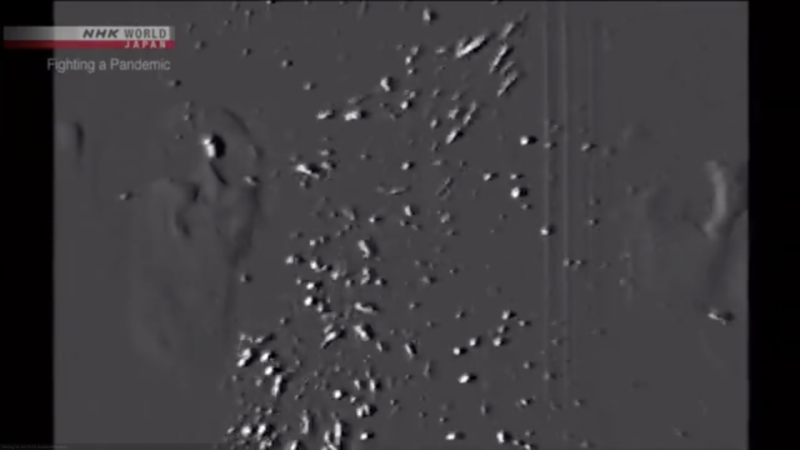Scientists Use High-Sensitivity Camera to Capture ‘Microdroplets’ that May Transmit Virus
Researchers in Japan released some truly fascinating footage this week. Using special ‘high-sensitivity’ cameras and laser beams, they’re able to capture microdroplets that are 1/10,000 of a millimeter in size—droplets that are invisible to the naked eye, and may contribute to the spread of COVID-19.
The video was captured as a collaboration between Japan’s NHK broadcasting organization and the Japanese Association for Infectious Diseases.
While the scientific jury is still out on how effectively coronavirus can be transmitted in droplets this small—a study published in the New England Journal of Medicine in mid-March said aerosol transmission was “plausible”—the video and study referenced above is focused on showing just how many of these invisible droplets we emit and how long they remain suspended in the air.
As the footage shows, it’s not just coughing and sneezing that release mircodroplets, simply having a conversation does as well.

One very important medical note: this does not “confirm” that COVID-19 can be transmitted in this way. It’s unclear how much virus you would need to be exposed to in order to be infected, and each of these tiny droplets would obviously contain far less than the “macro” droplets produced by a sneeze or a cough.
“We still don’t know how high a concentration of viable SARS-CoV-2 is needed in practice to infect a human being, though this is something we are looking to model in the future,” Dylan Morris, co-author of the New England Journal of Medicine study, told Live Science last month, emphasizing that the risk is greatest in a hospital setting.
However, based on recent news, there is reason to believe they pose at least some risk to the general public as well (see Tweet by Morris below). And experiments like the above help to visualize this risk.
Important as a scientist to update and correct when there is new evidence. When our stability paper came out, I said that we didn't have clear evidence of principally aerosol-driven transmission in an everyday settings. We now do have such evidence https://t.co/jE4LuT46O5
— Dylan Morris (@dylanhmorris) April 1, 2020
To see the experiment for yourself—and get a little bit of public health advice at the same time—check out the full news report above. Footage like this demonstrates, even more emphatically, why it’s so important that people practice proper social distancing to keep themselves and their loved ones safe.
(via BGR)